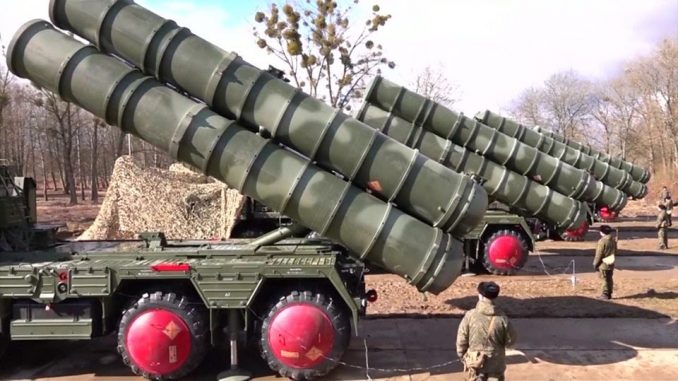
Turkey has received the first parts of a Russian S-400 missile defence system despite opposition from the US.
The shipment arrived in an airbase in the capital Ankara on Friday, the Turkish defence ministry says.
The move will anger the US, which has warned that Turkey cannot have both the S-400 anti-aircraft defence system and US F-35 fighter jets.
Turkey and the US are Nato allies – but Turkey has also been establishing closer links with Russia.
What’s the argument about?
Turkey has signed up to buying 100 US F-35 warplanes and has invested heavily in the F-35 programme. Turkish companies produce 937 of the plane’s parts.
But Turkey has also pursued an increasingly independent defence policy amid strained ties with the US and Europe. It has purchased Russia’s advanced S-400 air defence system for $2.5bn and sent members of its armed forces to Russia for training.
US defence officials said the S-400 is incompatible with the wider Nato air-defence system in the region.
The officials said they did not want the F-35 jets to be near S-400 systems because they feared Russian technicians would be able to access the F-35’s vulnerabilities.
(snip)
How important is Turkey?
Turkey has the second-largest army in Nato, a 29-member military alliance.
It is one of the US’s key allies, and is located in a strategic position, sharing borders with Syria, Iraq and Iran.
It has also played an important role in the Syria conflict, providing arms and military support to some rebel groups.
However, it has seen relations deteriorate with some Nato members and the EU, who have accused Mr Erdogan of adopting an increasingly authoritarian style following a failed coup in 2016.
How does the S-400 work?

- Long-range surveillance radar tracks objects and relays information to command vehicle, which assesses potential targets
- Target is identified and command vehicle orders missile launch
- Launch data are sent to the best placed launch vehicle and it releases surface-to-air missiles
- Engagement radar helps guide missiles towards target
*see full story by BBC News